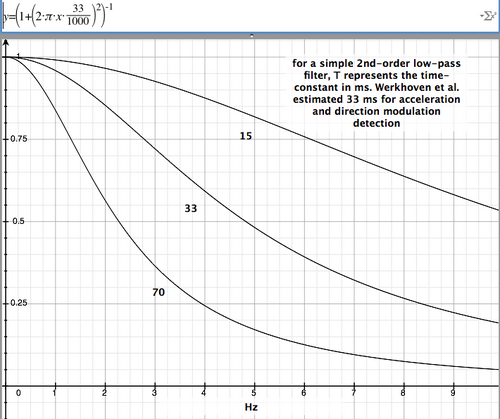Holcombe:TemporalLimitsReview
Recent members• Alex Holcombe
|
Projects• Testing Booth Calendar |
|
Technical• Skills Checklist |
Other• Plots,Graphs
|
Notes for the project described in [1] as well as forthcoming _Subjective Time_ MIT Press volumes
old notes for Dani JoV paper: Temporal Noise
also see multiple drafts of consciousness vs. postdiction
integration interval
[2] found attention / central viewing dramatically increased motion integration interval, with max integration interval 10 sec as found by Burr and Santoro
effect of distance on temporal binding (in cases where low-level motion was avoided)
- Motoyoshi found x for
- For temporal freezing paper, we don't know precision
- Martini & Nakayama found X
- Long-range alignment judgment we found little effect in [3]
- Binocular rivalry waves can be slow, e.g.
- Migraine aura glacial
- On the other hand,
- Don't forget Yan's relative motion result
- Some apparently-spreading processes seem instantaneous (spokes illusion)
More discussion at my Google Doc on the topic, in reviews folder
modeling
Werkhoven, Snippe, & Toet. First-order, second-order, etc. low-pass filter: http://en.wikipedia.org/wiki/Low-pass_filter
- acceleration and direction alternation

|

|
|---|
If temporally low-pass the Reichhardt outputs, all speeds represented in speed-modulated stimulus but not in unmodulated stimulus. If temporally low-pass the pre-filtering stage,wouldn't be able to perceive motion at high frequencies If delay stage is temporally low-pass,
refs
- Holcombe AO. Seeing slow and seeing fast: two limits on perception. Trends Cogn Sci. 2009 May;13(5):216-21. DOI:10.1016/j.tics.2009.02.005 |
- Melcher D, Crespi S, Bruno A, and Morrone MC. The role of attention in central and peripheral motion integration. Vision Res. 2004 Jun;44(12):1367-74. DOI:10.1016/j.visres.2003.11.023 |
- Linares D, Holcombe AO, and White AL. Where is the moving object now? Judgments of instantaneous position show poor temporal precision (SD = 70 ms). J Vis. 2009 Dec 8;9(13):9.1-14. DOI:10.1167/9.13.9 |